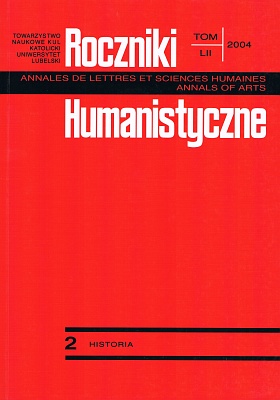Sarmatia and Sarmatism in the Polish Culture of the 17th Century in the Light of the Researchers' Opinions
Abstract
The present work devoted to Sarmatia and Sarmatism in the 17th century Polish culture aims at showing the facts about what Sarmatia was in the historical sense, what its real geographical situation was, in what way the Sarmatian myth originated and what the noblemen's ideology of Sarmatism consisted in. It also presents historians' opinions of Sarmatism as a noblemen's cultural current.
The 17th century Sarmatism grew from the noblemen's need to prove their `splendor'; it also served protecting its privileges. It swerved from the historical facts, but owing to those longings it worked out its own, special culture, which impressed a clear mark on the national culture.
Sarmatism derived inspiration from two separate cultures of the East and the West; it also reached for Polish national folklore, in this way blurring the borderlines of the particular social states, which it – on the other hand – watched so jealously.
It borrowed elements of fashion, clothes, the army and ornaments from the Turkish Orient; the Church art eagerly took motifs from the rich Orthodox Church as far as rites and ornaments are concerned; and in art and architecture influences can be seen of the Italian mannerism.
In literature the noblemen's Sarmatism created new literary genres: narrative, grotesque and ones connected with memoirs. On the other hand, Polish Christmas carols are derived from folk culture.
Sarmatism is also a certain lifestyle and a style of manners of the 17th noblemen, that is often called Old-Polish culture.
Copyright (c) 2004 Roczniki Humanistyczne

This work is licensed under a Creative Commons Attribution-NonCommercial-NoDerivatives 4.0 International License.





